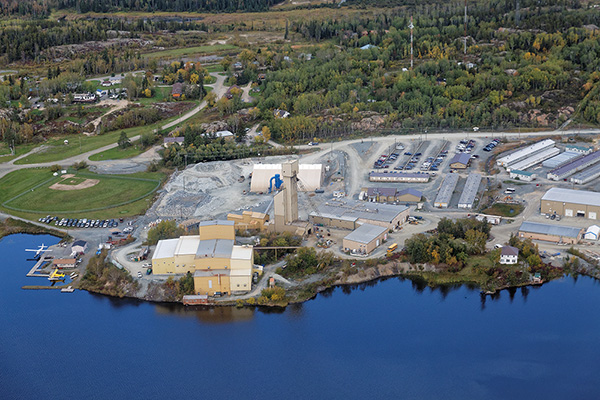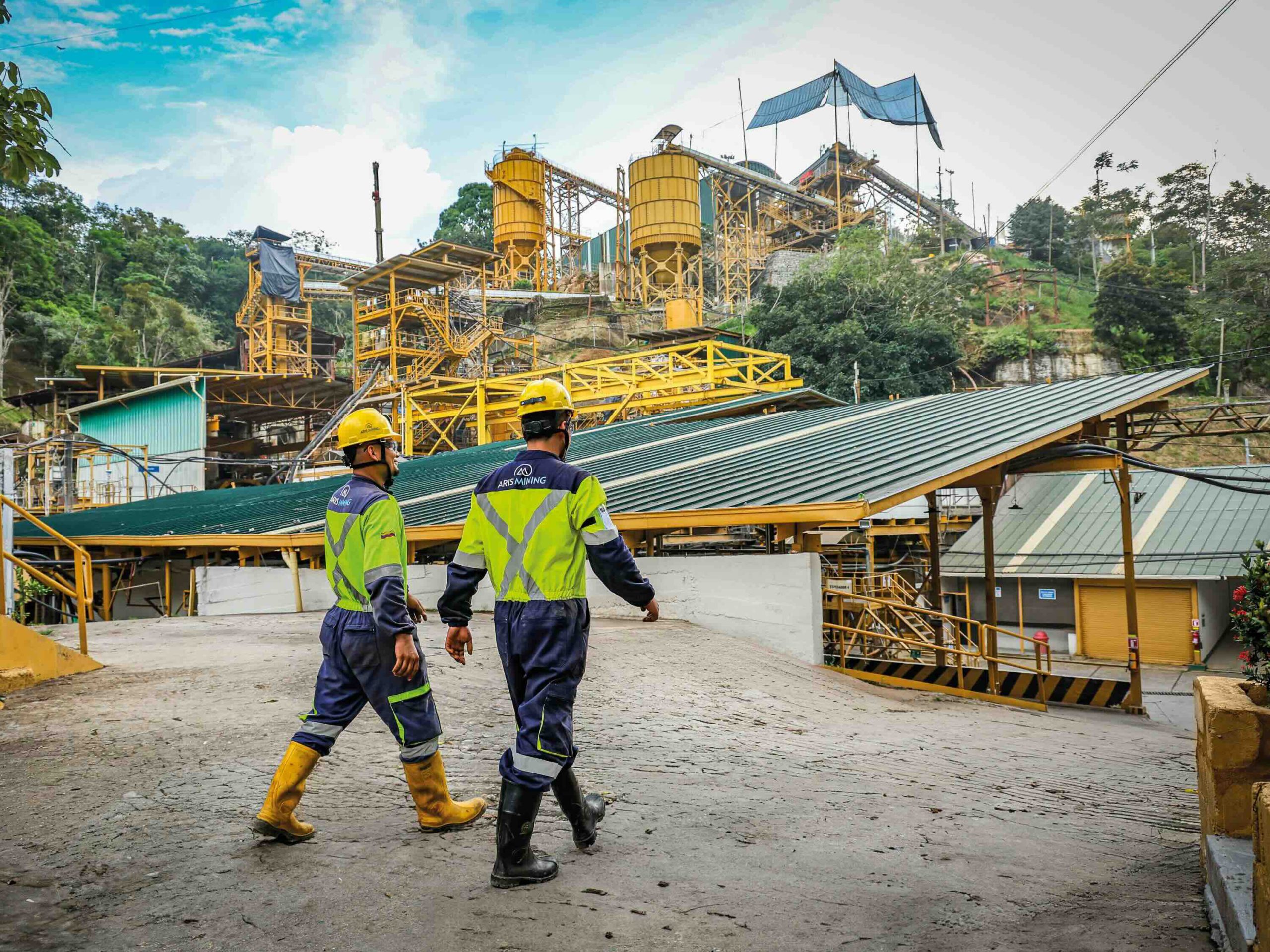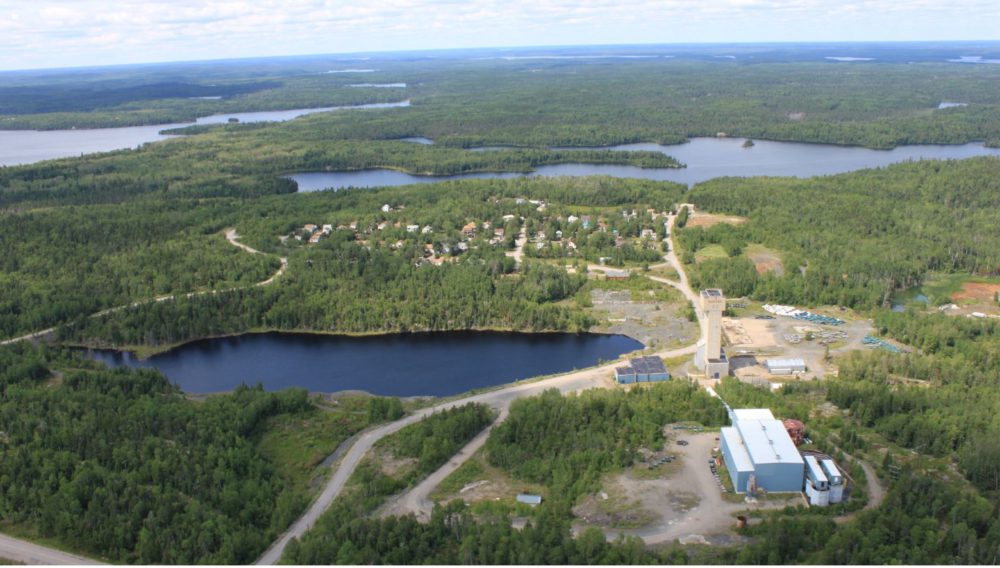Canada’s next mines-to-be get creative with financing
There’s no shortage of shovel-ready mine development projects that are looking for funds for construction.
But the list of mining projects that can actually attract financing dollars these days is much shorter.
No matter how promising their economics, Canada’s next mines-to-be have all had to get creative with financing in order to move ahead. Here’s a look at three that have landed mine financing deals this year.
- Eagle

Road building in the crusher area at Victoria Gold’s Eagle project, in the Yukon. CREDIT: VICTORIA GOLD
Victoria Gold’s Eagle project has been on our radar for several years. The company released an initial feasibility study for the central Yukon project in 2012, and then an updated feasibility study in 2016. The 190,000-oz.-gold per year project is set to be the Yukon’s largest ever gold mine.
In March, Victoria Gold closed a $505-million financing package that will fully fund construction, with first gold slated for the second half of 2019.
The components of the financing (royalty streaming, private equity and OEM financing components) – and the absence of any public equity component – said a lot about the state of the market. The biggest part of the financing consisted of two credit facilities with private equity firm Orion Mine Finance totalling US$175 million ($219 million).
The next single biggest component was a $98-million royalty with Osisko Gold Royalties.
An equipment financing package with Caterpillar Financial totalled US$50M ($63M); and an equity component totalling $125 million rounded out the package with two private placements totalling with Orion for $75 million and with Osisko for $50 million.
A September 2016 feasibility study pegged initial capital costs at Eagle at $370 million.
With the project now fully financed, Phase 2 construction began in March with the company reporting that overall engineering was 65% complete in late May. Foundations for the crushing and gold recovery facilities were slated to begin in July and a camp expansion from 250 to 450 beds was to be completed by the end of May.
Major long-lead items have been ordered; mobile equipment was expected to be shipped to site starting in June, with the crushers to follow in the fall.
Phase 1 construction work, including 50% of detailed engineering, camp expansion, earthworks and road upgrades was completed in November 2017.
The 33,700-tonne-per-day, open-pit, heap-leach operation has a projected mine life of 10 years and a strip ratio of 0.95 to 1. Average annual production is forecast at 190,000 oz. gold at cash costs of US$550 per oz. or AISC (including royalties) of US$750 per oz.
At a gold price of US$1250 per oz., a 2016 feasibility study pegged Eagle’s post-tax NPV at $508 million and its IRR at 29%.
Eagle hosts reserves of 2.66 million oz.
gold in 123 million tonnes grading 0.67 g/t gold.
The deposit is part of the 555-sq.-km Dublin Gulch property, 85 km from town of Mayo. Eagle enjoys access to infrastructure, including grid power within 45 km and year-round road access.
- Whabouchi

Nemaska Lithium’s Whabouchi project.
CREDIT: NEMASKA LITHIUM
Building on growing momentum in the battery minerals market, Nemaska Lithium has secured financing totalling $1.1 billion to build its Whabouchi lithium mine and electrochemical plant in Quebec.
The company announced some of the various components of the deal over April and May, with the complete package for the $801-million project closing at the end of May.
The financing includes the first streaming deal in the lithium space – a $150-million agreement with Orion Mine Finance. In return for the advance payment, Orion will receive about 8.7% of sales revenue from production of both lithium hydroxide and lithium carbonate.
(Nemaska has the option to buy back 50% of the stream.) The largest component of the deal is debt, with a US$350 million ($455 million) offering of senior secured callable bonds completed on a private placement basis. Also part of deal, a $99-million financing with SoftBank Group that will give it 9.9% of the company’s shares; and an $80-million private placement with Ressources Québec.
Unlike the other financing deals, a significant component of Nemaska’s financing comes from the public market in the form of a $280-million public offering of common shares issued on a bought deal basis.
In addition to clinching the multi-faceted financing deals, Nemaska has lined up several customers for its product, signing offtake agreements with FMC, Johnson Matthey and LG Chem.
The Whabouchi project includes a spodumene mine and concentrator in the James Bay region, 300 north of Chibougamau, and an electrochemical plant in Shawinigan, which will produce high-purity lithium hydroxide and lithium carbonate via a proprietary process.
An updated feasibility study released in January extended the mine life of the open-pit and underground operation to 33 years from 26. With a capex of $801 million, the project has an after-tax NPV of $2.4 billion (at an 8% discount rate) and an IRR of 30.5%.
With an annual production capacity of 33,000 tonnes of lithium-carbonate equivalent, the plant now has added flexibility to produce up to 16,000 tonnes per year of lithium carbonate, or to produce only lithium hydroxide, depending on the market. It’s expected to be the lowest- cost producer of lithium hydroxide.
Construction of the mine is expected to take 15 months with commercial production of spodumene concentrate starting in the third quarter of 2019. The Shawinigan plant will take 24 months to complete, with commerical production of lithium hydroxide and lithium carbonate (both are used in electric vehicles batteries) expected to begin in the third quarter of 2020.
Nemaska has an offtake agreement in place for all spodume concentrate production for two years covering the period before the Shawinigan plant is ready.
Combined open-pit and underground proven and probable reserves at Whabouchi total 37 million tonnes averaging 1.4% Li2O.
Open-pit production will last for 23.6 years to a maximum depth of 224 metres, and with an average strip ratio of 2.95 to 1. Underground mining will be via longhole stoping.
- Sugar Zone

Harte Gold independent consultant George Flach (centre) at the Sugar Zone gold project in northern Ontario. CREDIT: HARTE GOLD
With a smaller-scale, less expensive project and a staged approach to development, Harte Gold has been able to take a different financing approach at its Sugar Zone project in northern Ontario, 80 km east of the Hemlo camp.
With a US$70-million debt financing announced closed in June, Harte is fully funded for the first two stages of its three stage mine plan for the Sugar Zone.
The financing with two private equity funds, Sprott Private Resource Lending and Appian Natural Resources Fund, is comprised of a US$50-million senior secured debt facility with Sprott, and a US$20-million subordinated loan with Appian. There’s no commitment to draw down the total US$70 million so Harte will only use what’s required.
Due to construction that’s already been completed at the mine and long lead item orders having been made in 2017, the company has only about $36 million left to spend on preproduction capital costs. The cost of the processing plant, paste fill plant, tailings management, site power and other infrastructure was pegged at $83 million in a PEA published in May 2018.
In late June, mill construction was substantially complete and connection to the power grid was scheduled for late July.
The Sugar Zone is expected to produce an average of 80,700 oz. gold annually over its 11-year mine life, and first production is slated for later this year.
The project is already permitted for a 540 t/day operation and Harte has conducted a 70,000-tonne bulk sample to assess resources, the continuity of mineralization, the metallurgy and gold recoveries, the mining method and mining costs. It’s also mined an additional 30,000 tonnes of material.
Phase 2 production of 800 tonnes per day will start in 2020, and in a third phase in 2021, the company plans to increase throughput to 1,400 t/day, which will bring production to over 100,000 oz. gold annually. Additional infrastructure, including a second ball mill and leach circuit, will be required for Phase 3 production.
While it initially can only mine at 540 t/day, the company can mill 800 t/day and will do so by combining underground feed with material from the 40,000 tonnes of stockpiled material already on surface. The target date for final permits for Phase 2 commercial production was in late July, to coincide with grid connection and mill start-up.
According to the recent PEA, at a gold price of US$1,250 per oz., and a 5% discount rate, the Sugar Zone project has a post-tax NPV of $244 million and an IRR of 42%.
However, the company believes there’s lots of room to optimize the PEA numbers.
First, it has a half-million oz. in resources that are not yet in the mine plan. There are also indications that the company can improve on head grades as infill drilling of inferred resources at both the Sugar Zone and Middle Zone deposits has shown. Harte also believes it can improve on mining costs.
The Sugar Zone and Middle Zone deposits at the project will both be accessed by ramps and mined via longhole stoping. Harte expects to be a first-quartile cash cost producer with a life-of-mine operating cost of US$507 per oz. gold or AISC of $708 per oz.
Indicated resources currently stand at 2.6 million tonnes grading 8.52 g/t gold for 714,200 oz. with inferred resources at 3.6 million tonnes grading 6.59 grams gold for 760,800 oz. gold.





Comments